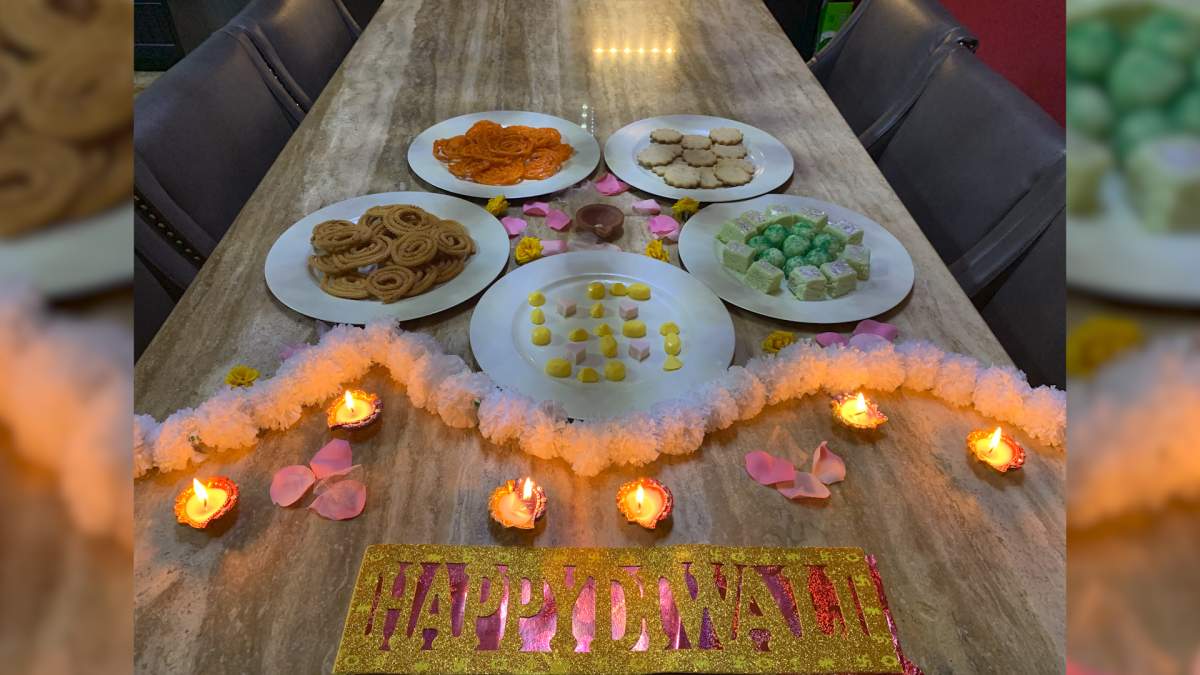Before the COVID-19 pandemic, Ashyana-Jasmine Kachra never cooked for herself.

“I used to order Thai food on Sunday and then ration it out to last the whole week,” she said.
But when the pandemic forced the 21-year-old Western University student to move back in with her parents in their northeast Toronto home, she became interested in learning about her family’s cooking traditions and getting in touch with her roots.
“When I was on campus, I was there from morning till night,” Kachra said. “Cooking became a way for me to express this identity that I have…I’m paying homage to where I come from.”
Kachra is just one of many second-generation Canadians learning more about the cuisines of their ancestors during the pandemic.
Kachra’s mother and father are of Indian heritage but were born in Tanzania. They immigrated to Canada as children, and while they still cook dishes like butter chicken for dinner, they relied on older relatives, like Kachra’s grandparents, to make more traditional and labour-intensive dishes from childhood like paratha, a flatbread traditional to India and East Africa.
- Canadian woman charged with illegally crossing into U.S., kicking border agent’s face
- A new ‘cold’ war? Canada looks to bolster Arctic security, sovereignty
- Canadian furniture industry still ‘reeling’ after Trump pauses tariff spike
- Ottawa propose fines of up to $1M for violating foreign influence registry rules
Kachra said it wasn’t until her grandmother passed away last spring that really sparked her interest in cooking.
“She was someone who would always cook for us,” Kachra said. “The day before she passed away, she sent samosas over to our house.”
As Kachra’s grandfather was packing up her grandmother’s possessions, he decided to give Kachra a collection of spices and traditional African cooking pots, called sufuria.
“She didn’t leave any written recipes behind, but I started to try and recreate them,” Kachra said.

Kachra first reached out to her maternal grandmother to get tips on preparing certain dishes.
“She would give me advice on the types of pots and spoons she uses,” Kachra said.
But since her grandmother’s techniques were approximate—a sprinkle of a spice or a handful of other ingredients—Kachra took to the internet for additional guidance.

Get daily National news
“I definitely watched a lot of YouTube videos of moms in the kitchen so I could get a visualization,” she said.
Since family recipes are often passed by word-of-mouth, internet resources like YouTube help second-generation cooks fill in the gaps of informal family recipes. With more free time during the pandemic, Kachra could sit down and research different executions of her family recipes and figure out the best techniques to use.
Blogs like Subtle Asian Cooking are also a valuable source for second-generation cooks. While it began as a Facebook group, founder Kevin Le later created a website to collect and share recipes submitted by group members. With more than 300,000 members on Facebook alone, the community shares recipes from Taiwanese, Chinese, Cambodian, Thai cuisine, and more.
“I thought there was a need for more Asian food in mainstream media,” Le explains. “It’s a way for us to teach other Asians more about our traditional roots through food.”
During the pandemic, Le’s Facebook group tripled in size, which was a sign to him that Asians were cooking more and seeking resources for traditional recipes.
While Le was born in Vancouver, his parents are from Vietnam. He didn’t learn how to cook Vietnamese food as a child because his parents told him to focus on school.
“Now that we’re finished school and we have jobs, we want to learn more about cooking from our parents, and we want to incorporate that into our life so that those traditions aren’t lost,” he said.
Le, who lives with his mother, said the two have been able to combine their cooking knowledge.
“My mom makes fishcakes, but she doesn’t use a recipe so it’s different every time,” Le said.
“She usually just uses whatever fish is on sale, like salmon or red snapper. But I helped her choose fish with softer flesh, like basa fillets or cod, and measure out ingredients to get more consistency and a good quality fish cake each time she makes it.”
Like Le, Kachra prefers a more precise, measured approach to her cooking. Gradually, she perfected her technique and learned to make her great aunt’s custard-like dessert, chasani vari pudding.
By the time Diwali came in mid-November last year, Kachra was able to cook an assortment of traditional dishes for her family. It was something the family hadn’t done since Kachra was a kid.
“It was really important to me to celebrate Diwali with my family,” Kachra said.
“I made chakli, which is like a snack food, and jalebi, which is something my grandparents would make when we were growing up — and it’s really hard to make.”
When Kachra’s grandfather, from her mother’s side, tried her jalebi, he said it tasted just like his parents used to make it.
“It felt really nice to hear that,” she said.
Here’s Kachra’s recipe for Ugali and maharagwe, a traditional East African dish with variations from her family.
Maharagwe Ingredients
1 yellow onion
2 garlic cloves
1 tomato
2 tsp turmeric
1 tbsp curry powder (homemade or store-bought)
2.5 tsp dhana jeero (ground cumin and ground coriander – if adding separately add 2tsp of ground cumin and 1tsp of ground coriander)
1 tsp ginger garlic paste
1/8 tsp cayenne pepper
1/4 tsp red pepper flakes
1 can kidney beans
1 can of coconut milk
1 cup of spinach (frozen or fresh)
Salt and pepper to taste
Ugali Ingredients
2 cups of cornmeal (Ugali flour)
4 cups of water
Method
Maharagwe
- Dice onion and tomato. Set aside.
- Mince garlic. Set aside.
- Heat a pot on medium heat with onions, tomato and garlic. Saute until soft.
- Add turmeric, curry powder, dhana jeero and ginger garlic paste. Mix well and cook for 2-3 mins.
- Add kidney beans. Mix to incorporate.
- Add the full can of coconut milk, cayenne pepper and red pepper flakes. Adjust based on your preferred spice levels.
- Add in spinach, cover and let simmer for 15-20 mins so it becomes thick. While this is simmering cook your ugali.
Ugali
- Heat 4 cups of water in a sufaria (or a deep pot).
- Once the water starts to boil, reduce heat to medium high and add in 1 cup of the ugali flour.
- Begin to mix with a wooden spoon until incorporated.
- Slowly add the rest of the ugali flour. Mix thoroughly after each addition. The method here is important. Mix by hitting the ugali on one side of the pot and re-mix again.
- Once all the flour has been added and mixed, cover the lid and cook for 5 minutes
- Take off the lid and continue to mix. You will know the ugali is ready when it does not stick to the pot or spoon.
- Shape your ugali into a ball and serve with your maharagwe.
Andrea Yu is a freelance journalist based in Toronto. She writes about life, culture, food, drink and business.












Comments